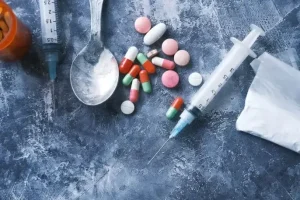
Contact a healthcare professional with any additional questions. You may be asked questions about past drug use and your medical history. Answer openly and honestly to get the best treatment and support. The amount of time your symptoms last depends on the frequency of use and severity of the addiction, as well as individual factors like your overall health. The symptoms you experience will depend on the level of withdrawal you are experiencing. Also, multiple factors dictate how long a person will experience the symptoms of withdrawal.
Management of mild alcohol withdrawal (AWS score 1-

Buprenorphine is the best opioid medication for management of moderate to severe opioid withdrawal. Opioids are drugs such as heroin, opium, morphine, codeine and methadone. Opioid withdrawal can be very uncomfortable and difficult for the patient. In addition to date filters in both databases, PubMed’s clinical study filter and PsycINFO’s age and academic journal filters were used.
- A test called the Clinical Opioid Withdrawal Scale (COWS) can give your doctor an idea of how serious your case is.
- These are often called post-acute withdrawal symptoms, and they may occur for a few months after stopping fentanyl.
- A significant danger of opioid addiction is the need to increase the amount you’re taking.
- Patients should be monitored 3-4 times daily for symptoms and complications.
- Within hours of last using fentanyl, individuals become very sick and may not appear to be themselves.
International Patients

Counseling can help you learn ways to cope with stress, identify early warning signs of relapse and keep you from taking opioids. Your healthcare professional may recommend continued counseling after you’ve completed your opioid taper. Your healthcare professional may recommend that you have naloxone available to lower your risk of an overdose.
Helping Someone Withdrawing or Detoxing From Fentanyl

Symptomatic medications should be offered as required for aches, anxiety and other symptoms. Stimulants are drugs such as methamphetamine, amphetamine and cocaine. Although these drugs vary in their effects, they have similar withdrawal syndromes. Patients should be offered psychological care to address these symptoms.
Drugs & Supplements
It should not be used in place of the advice of your physician or other qualified healthcare providers. You may notice that you continue to feel slightly off for several weeks after stopping opioids. One of the major causes of opioid withdrawal in the United States is the misuse of prescription pain drugs.10 Physicians and other healthcare providers must be careful in prescribing opioids to their patients. Healthcare providers should only provide a limited prescription of opioids when essential to their patients. If your PAWS symptoms seem overwhelming or dangerous, you should seek medical treatment.

To reduce the risk of relapse, patients should be engaged in psychosocial interventions such as described later in these guidelines. Patients who repeatedly relapse following withdrawal management are likely to benefit from methadone maintenance treatment or other opioid substitution treatment. There is an urgent need to identify, research, and implement adequate treatments for OWS and OUD in the era of high-potency synthetic opioids such as fentanyl. Buprenorphine and methadone, with or without adjunctive medications, have been used to successfully treat OWS. Research shows that combination treatment and pharmacokinetically informed protocols may reduce OWS severity while reducing the time required for a successful transition to MOUD. Dependence is more likely if you use or have used other drugs, have an untreated mental illness, or live in a situation that enables drug misuse.
- We provide an easy transition from detox to inpatient rehab, as our detox programs are located inside our inpatient rehab facilities.
- Tiny amounts of the powder can be put into drugs to increase potency, create “fake” drugs or make it easier to smuggle.
- There’s some evidence that this method decreases symptoms, but it doesn’t necessarily impact the amount of time spent in withdrawal.
- Patients who are opioid dependent and consent to commence methadone maintenance treatment do not require WM; they can be commenced on methadone immediately (see opioid withdrawal protocol for more information).
Maintenance treatment continues to be superior to detoxification without continued management. Shorter induction protocols allow patients to initiate evidence-based treatment more quickly, reducing the use of illicit or non-prescribed substances. Despite how long does fentanyl stay in your system compelling findings, the present data are not without limitations. Secondly, the sample was predominantly male, limiting generalizability to females with OUD.
Annual Fentanyl Overdose Rates
- Doctors use it to treat pain that doesn’t respond to milder pain killers.
- In some cases, medications can help normalize brain chemistry and prevent PAWS symptoms, which can help you with recovery.
- But it’s one of the signs of cannabis (marijuana) use disorder, which can significantly impair your life.
Lofexidine hydrochloride is an alpha-2 adrenergic agonist indicated for the acute discontinuation of opioids. It works by binding to receptors on adrenergic neurons, which reduces and sympathetic tone and decreases norepinephrine release (NE).7 According to FDA guidelines, it can be used for up to 14 days. Individuals with OUD aged 18–65 years were recruited among three study sites in New York, New Jersey and Florida. Screening assessments included measures of drug use (e.g. time-line follow-back 25, breath alcohol test and urine drug toxicology), assessments of physical health

